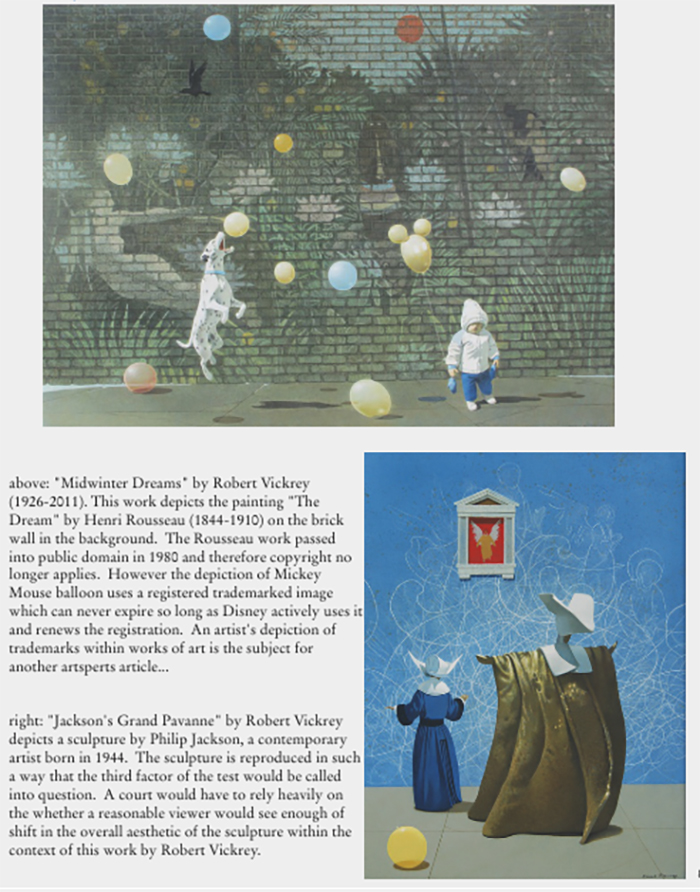|
Copyrights and Transformative Works
Dear Artsperts:
I noticed in your gallery works by an artist that included images of works by other artists. Does the artist need to get permission from the other artists to use their works?
Transformed
Dear Transformed,
The artworld has certainly kept lawyers and courts busy with copyright concerns since art often falls in the grey area of the law. Famously, the Obama "Hope" poster by street artist Shephard Fairey used a photo from the associated press without permission. The case was settled out of court, so unfortunately a legal opinion was never rendered to help provide direction for other artists. However, there have been court cases involving the artist Richard Prince, who continues to push the envelope of fair use in the artworld.
The lawsuits against Prince have dealt with the question of whether his work is fair use, meaning would a "reasonable viewer" consider Prince's work transformative. The court in the most recent case (July 2017) devised a four-factor test to answer this: 1) does the new work make substantial aesthetic alterations to the original work; 2) is the new work creative and published; 3) is the original work reproduced in such a way that it retains its own aesthetic appeal within in the new work; 4) can the new work serve as a substitute for the original work. The new work is deemed transformative and therefore fair use if a "reasonable viewer" would answer these questions yes – yes – no – no. The court found that fair use did not exist for Prince because his work only passed the second factor of the test.
The artist you saw in our gallery is Robert Vickrey (1926-2011) who was inspired by many artists throughout history. Vickrey often depicted the loss of innocence with subject matter of urban youth and nuns interacting with imagery from works of art by other artists. He referred to his work as "magical realism." Robert Vickrey passed away in 2011. It is highly unlikely, if even possible, for an artist to file a lawsuit against the estate for copyright infringement. However, this is a valid question since most artists are influenced in at least in some way by other artists, both historic and contemporary. We will work through the four-factor test using Vickrey as an example.
Copyright applies for the life of the artist plus 70 years. Therefore, no issue arises concerning Vickrey's works that incorporate early artists such as Rousseau who passed away in 1910. However, you ask a good question regarding works that incorporate more recent artists, such work by the sculptor Philip Jackson.
Under the first factor Vickrey work provides substantial alterations to the aesthetic of the original work by giving new and different perspectives to the originals. The second factor is also a yes because his work is creative and published, having been exhibited in museums, galleries and addressed in books and art news articles. The third question might be a bit tricky for Vickrey in instances where he fully reproduces a work of art within his paintings. However, the reasonable viewer is likely to understand that Vickrey’s intention is not to merely copy but to create a new overall aesthetic for the original work within the context of his own creative work. The final question is a clear no, his work would not substitute for the originals. The answers to this test applied to Vickrey would likely be: yes – yes – maybe – no. A court would then draw upon the "reasonable viewer" aspect of the test which certainly favors Vickrey and a finding for fair use. Therefore, permission is not needed.
Sincerely,
The Artsperts
|


